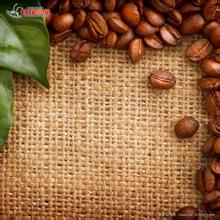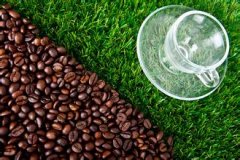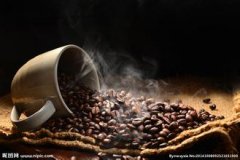Fruit aroma sour and sweet feeling Salvador Pacamara boutique coffee beans origin development history culture Jane

Coffee from El Salvador is a specialty of Central America, where it is light, fragrant, pure and slightly sour. Like Guatemala and Costa Rica, coffee in El Salvador is graded according to altitude, and the higher the altitude, the better the coffee. The best brand is Pipil, which is what the Azbec-Mayan (Aztec Mayan) called coffee, which has been approved by the American Organic Certification Society (Organic Certified Institute of America). Another rare coffee is Pacamara, a hybrid of Pacas and Maragogype. The best place to produce the coffee is in western El Salvador, adjacent to Santa Ana, which is close to the border with Guatemala. Parkmara coffee is full-grained, when the flavor is not too strong El Salvador (El Salvador) is one of the small countries in Central America, very densely populated. The flavor of its coffee is characterized by excellent balance.
Pacamara is a combination of El Salvador bourbon dwarf Pacas and elephant beans (pacas x Maragogype), with sour and sweet fruit, sometimes biscuit, sometimes fruit, good firmness and smoothness, suitable for eosinophiles, and the overall flavor is much better than that of elephant beans.
High viscosity, greasy feeling is its biggest feature, shallow baked acid similar to green apples, very domineering, so some people can not adapt, but can use slow stir-frying techniques to make the acid more round and smooth.
The sweetness is similar to the creamy taste of biscuits, with changeable overall flavor and wide amplitude.
The origin of the variety
Pacamara is an artificial hybrid of Pacas and Maragogype, which was first bred by Salvadoran research institutions in the 1950s (mostly 1958). The new variety is considered to be the result of the pursuit of large grain Arabica species and inherits the good characters of the parent plant. Pacas, which has Bourbon lineage, is a native variety of El Salvador and inherits the excellent flavor of the ancient species of bourbon. It was first discovered in 1949. Maragogype is a variety of Typica that first appeared in Brazil. Because of its large bean body, it is known as "elephant bean" elephant bean.
Coffee variety: Pacamara Pacamara
Variety becomes famous
Pacamara is another example of making a name for itself through COE events. In the 90s of the 20th century, some farmers in the Chalatenango producing area of South Song in Charat, El Salvador began to grow Pracamara. In 2006, a farm in this producing area took part in the competition with Pacamara and got the second place. In 2007, a number of farms in the same production area took part in the competition with Pacamara and won the first, third and fourth places. The brilliant record made Pacamara win attention.
Coffee variety: Pacamara Pacamara
Variety producing area
It was first cultivated by El Salvador and is still the main producing area in El Salvador. In addition, there are also many plants in Central and American countries, such as Nicaragua.
The honey treatment process is vulnerable to pollution and mildew, so it needs to be closely watched throughout the process, constantly turning, and speeding up drying, so as to avoid bad fermentation flavor. Its advantage is that it can best preserve the original sweet flavor of coffee ripe fruit, making the coffee show elegant black sugar flavor and drupe flavor, while the berry flavor also supports the basic aroma of red wine, which is considered to be a very elegant product. The popularity of honey-treated coffee beans is largely due to their sweet and thick characteristics, which are very suitable for Espresso production in cafes. In recent years, more and more coffee beans are called "Miel Process", and they have also become a favorite material for international coffee contestants.
On the basis of honey treatment, three honey treatment methods of black, yellow and red are subdivided.
Yellow honey treatment: about 40% of the pectin is removed; the drying method requires the most direct heat absorption, receives the most light drying, and lasts for about 8 days to reach a stable water content.
Red honey treatment: about 25% of the pectin is removed; the drying time is longer than yellow honey, and the time of direct sunlight exposure is reduced, even in shading sheds, lasting about 12 days.
Today, this coffee accounts for 40% of the country's exports. 35% of the extra hard beans of the best coffee are exported to Germany from January to March.
In the early 1990s, guerrilla warfare greatly damaged the country's national economy, reducing coffee production from 3.5 million bags in the early 1970s to 2.5 million bags in 1990-1991. The eastern part of the country was most affected by guerrilla warfare, and many farmers and workers were forced to leave the manor. The shortage of funds has led to a sharp drop in coffee production, from 1200 kg per hectare in the past to less than 900kg per hectare today. In addition, the government imposed an additional 15% tariff on exported coffee in 1986, that is, an additional 15% in addition to the existing 30% tax. Taxes, together with unfavorable exchange rates, greatly reduce the export of coffee and the quality of coffee.
Important Notice :
前街咖啡 FrontStreet Coffee has moved to new addredd:
FrontStreet Coffee Address: 315,Donghua East Road,GuangZhou
Tel:020 38364473
- Prev

Description of the flavor and flavor characteristics of El Salvador Pacamara boutique coffee beans with both fruity and rich aroma
Pacamara coffee is a hybrid of Pacas Pacas (a sudden variant of the bourbon species) and giant bean Maragogype (a sudden variant of the Tibica species found in Brazil) found in El Salvador in the 1950s. The coffee tree is very tall, the branch spacing of the trunk is wider than that of Pacas Pacas, and the edge of dark green leaves is wavy. It is suitable for cultivation at the elevation of 900m to 1500m.
- Next

A brief introduction to the planting Market Price of El Salvador Pacamara Fine Coffee Bean varieties
The best place to produce the coffee is in western El Salvador, adjacent to Santa Ana, which is close to the border with Guatemala. Parkmara coffee is full-grained, and when the aroma is not too strong in El Salvador, the coffee beans rich in the Kuskabapa region are the best, slightly lighter, fragrant, pure and slightly sour. Like Guatemala and Costa Rica, El Salvador
Related
- Detailed explanation of Jadeite planting Land in Panamanian Jadeite Manor introduction to the grading system of Jadeite competitive bidding, Red bid, Green bid and Rose Summer
- Story of Coffee planting in Brenka region of Costa Rica Stonehenge Manor anaerobic heavy honey treatment of flavor mouth
- What's on the barrel of Blue Mountain Coffee beans?
- Can American coffee also pull flowers? How to use hot American style to pull out a good-looking pattern?
- Can you make a cold extract with coffee beans? What is the right proportion for cold-extracted coffee formula?
- Indonesian PWN Gold Mandrine Coffee Origin Features Flavor How to Chong? Mandolin coffee is American.
- A brief introduction to the flavor characteristics of Brazilian yellow bourbon coffee beans
- What is the effect of different water quality on the flavor of cold-extracted coffee? What kind of water is best for brewing coffee?
- Why do you think of Rose Summer whenever you mention Panamanian coffee?
- Introduction to the characteristics of authentic blue mountain coffee bean producing areas? What is the CIB Coffee Authority in Jamaica?

